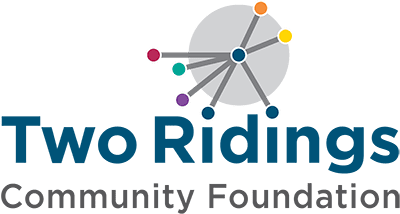North & East Yorkshire receive the second lowest level of voluntary sector income in England
How to grow the Yorkshire Pot: the case for more philanthropy in North & East Yorkshire
Last year Two Ridings Community Foundation, together with Yorkshire Funders, the National Lottery Community Fund and Leeds Community Foundation, published the second iteration of the Yorkshire & Humber Funding Ecology report. David Warner, an Associate of Two Ridings and advisor to the Yorkshire Funders reflects on that report and questions how we can grow the Yorkshire Pot.

The Yorkshire & Humber Funding Ecology report was designed to answer some key questions, including:
• What do we know about the funding of the voluntary sector in Yorkshire and the Humber?
• Does Yorkshire and Humber overall get its fair share of funding to the voluntary sector?
Some of the facts in the report seem quite impressive, at first, like:
• Between 2018 – 2021, voluntary organisations in Yorkshire & Humber received a total of £409m in funding from 20,000 awards made by 93 funders
• The value of funding from local funders has increased markedly from £26.3m (17 funders) in the 2019 report to £48m (19 funders) in this report.
But when you look at what is actually meaningful you see that by the population-weighted-by-deprivation measure, Yorkshire and Humber is the region with the proportionally lowest level of funding in England and the region is ranked eighth lowest out of nine England regions when it comes to voluntary sector income.
That’s right! Yorkshire and Humber have the lowest level of funding in England
And then when you drill down to the area that Two Ridings specifically covers (North & East Yorkshire, York and Hull) there are also further telling facts to digest
- There are funding “cold spots” across the patch particularly in Selby, Scarborough, and East Yorkshire.
- There are a few areas, such as Hull and Scarborough, where deprivation is concentrated, but there are discrete areas of deprivation across all districts in the patch. We call this ‘hidden poverty’. For some it is hard to believe that even Harrogate has areas of deprivation.
In producing this research, we wanted to gain a better understanding about how funding is distributed across the whole of Yorkshire & Humber. And then to use this knowledge to open an evidence-based dialogue between independent funders, like us, and the local public sector as to how the totality of our combined funding can be used to support local voluntary sector activity.
We also wanted to use this evidence to continue to make the case to larger national charitable trusts and foundations about why they should focus more of their funding on our region.
So, as we enter 2022 our challenge is how can we make progress on these ambitions?
- Firstly, we need to be bolder in our conversations with colleagues in the public sector and make use of opportunities like the forthcoming local government reorganisation in North Yorkshire, and enter a new dialogue with the new combined authority.
- Secondly, through our networks we will continue to make the case for, and to build on positive conversations to persuade national funders to give more to the region.
- Thirdly, my final thought, if you’ve read this and want to be part of these efforts to help make sure that North and East Yorkshire, and Hull, gets its fair share of the funding cake, get in touch.
David has over 30 years’ experience of working in civil society, starting as a front-line support worker working with the homeless through to running a multi-million-pound national charity, and leading London Funders before relocating to Scarborough. David has extensive experience of bringing together and creating alliances of usual and unusual suspects to create change and make action happen. David is Chair of Local Trust, a Trustee of Coast & Vale Community Action and Trustee of the Stephen Joseph Theatre in Scarborough.
